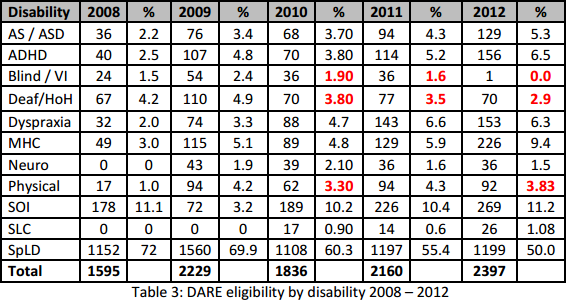Emer Gerrard | Contributing Writer
College has announced that those with physical or sensory disabilities will be given increased priority over other DARE (Disability Access Route to Education) students applying to Trinity, beginning next year. It is hoped that these students, including those who are hard of hearing and those who have visual impairments, should find accessing Trinity somewhat easier.
The policy change effectively means that if an applicant with a visual impairment or other sensory or physical disability receives 425 points while another DARE applicant with a non-physical or sensory disability such as ADHD receives 430 points, the applicant with the visual impairment will be offered the place before the ADHD applicant.
This policy is in reaction to low and decreasing numbers of students with physical and sensory disabilities participating in third level education and the perception among some that, due to Trinity’s high demand, it is a difficult college for those with disabilities to gain entrance to.
2011 Census figures compared with HEA transition data show that only a small number of young people with physical and sensory disabilities enter third level education. A mere 4.5% of 15-34 with serious visual impairments, 7.5% of those with serious hearing impairments and only 6% of those with severe physical disabilities were in higher education.
Although the Higher Education Authority National Access Plan has helped to more than double the number of college students with physical and sensory disabilities since 2006, there is still much work for Trinity to do. The Trinity College Access Plan 2009-2013 has set a specific target of a 10% increase in students with a disability. Furthermore, the HEA compact Institutional Objectives 2014-16 is hoped to increase the numbers of students with physical and sensory disabilities by 25% each year.







